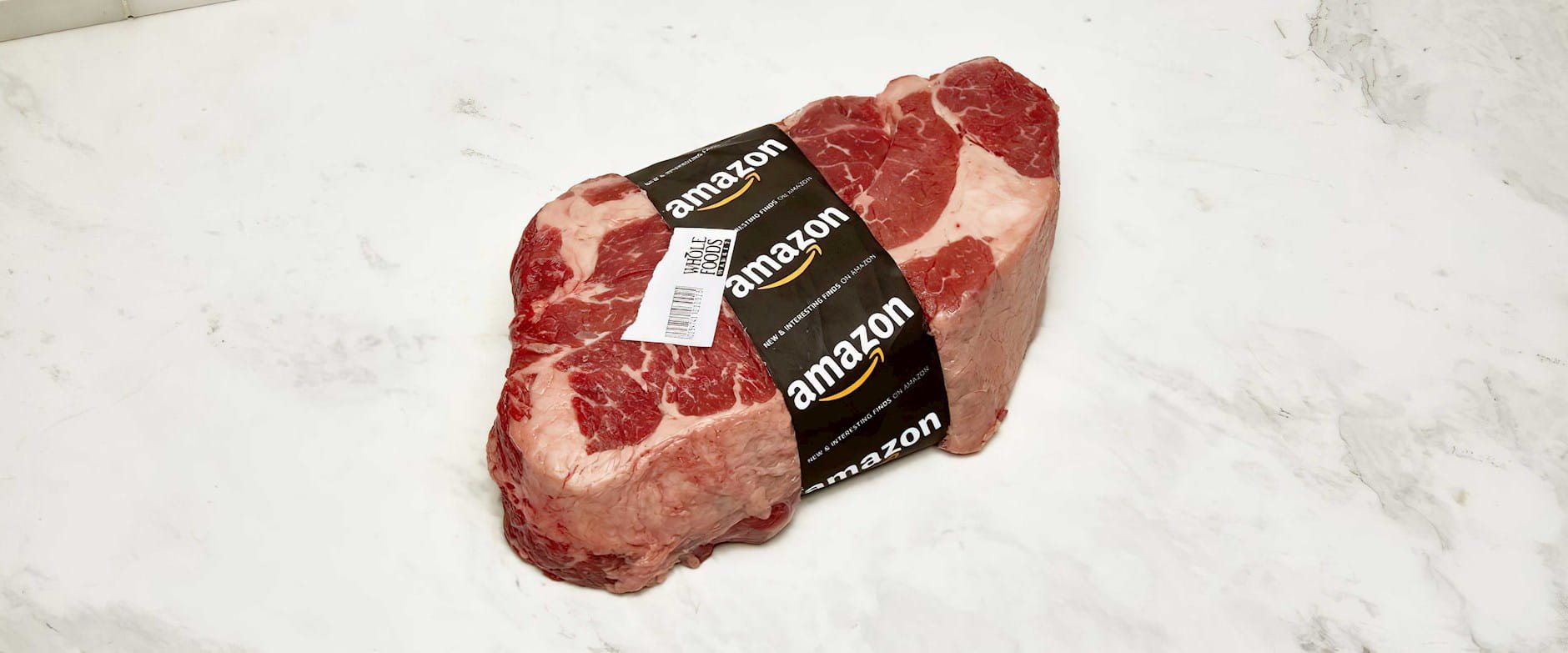
With Whole Foods, Can Amazon Fill Your Every Need?
It’s trying, by embracing scope, scale, and speed.
With Whole Foods, Can Amazon Fill Your Every Need?
Glen Gyssler
The Amazon–Whole Foods merger has shaken up the world of supermarkets and supercenters. But it’s also expected to affect and disrupt some other businesses.
These include but are not limited to online restaurant-order-and-delivery businesses (including Grubhub and UberEats), online grocery-delivery businesses (such as Instacart and Shipt), meal-kit subscription services (Blue Apron, HelloFresh, etc.), and more general-purpose delivery services (such as Postmates). With the help of Chicago Booth MBA student Yogesh Kansal, I used Twitter to examine the impact on some of these businesses. We used the same three time frames as when we analyzed the impact of the deal on traditional retailers.
We began with the sentiment scores of the following businesses: Grubhub, UberEats, Instacart and Shipt together, Blue Apron and HelloFresh together, and Postmates.
Sentiment comparison
• Positive • Negative • Neutral
UberEats went from having 50 percent positive sentiment before the announcement to about 60 percent positive sentiment in both periods after the announcement. The same is true for the Instacart-Shipt combination, which also saw a sizable improvement in sentiment. Grubhub initially increased from 28 percent positive to 48 percent positive but slipped back down to just 14 percent positive after the deal closed, with this low figure persisting until September 24. The meal-kit business seemed largely unaffected by the merger announcement, at least on Twitter. But general-purpose delivery may have suffered a bit as well.

It’s trying, by embracing scope, scale, and speed.
With Whole Foods, Can Amazon Fill Your Every Need?
A look at the perceptions, sentiments, and associations that changed over the course of the deal.
How Amazon’s Whole Foods Deal Impacts Supermarkets and SupercentersWord clouds indicate that Amazon and Whole Foods figured prominently in the Twitter streams of all the players mentioned, with the exception of UberEats and Postmates, which reflects the more generic nature of these delivery services. While UberEats is itself focused on restaurant delivery, it is part of the larger Uber business, which also includes services such as UberRush, a general-purpose delivery service. The strongest presence for Amazon and Whole Foods registered in Instacart-Shipt, which stems from Instacart’s delivery relationship with Whole Foods. On the other hand, after the merger closed, the only players that saw a continuing presence of the word “Amazon” in their Twitter streams were the meal-kit delivery companies.
Next, we looked at the perceptual maps of these players to see if relative perceptions were affected by the announcement. We observed a key change in the relative locations of UberEats, Postmates, and Blue Apron–HelloFresh. Prior to the announcement, it appeared, Postmates and the meal-kit delivery services were perceived as having more in common with each other than with UberEats. Postannouncement, however, it seemed that UberEats was viewed as broader than just food, taking it closer to Postmates’ location.
Relative perceptions



Finally, I looked at feature association maps and saw some consistencies over time in terms of companies and features. Specifically, Instacart-Shipt was associated with the “product” feature (in this case, more specifically with the word “assortment”), whereas Blue Apron–HelloFresh was associated with “price,” and GrubHub with “competition.” By and large, the consistencies seemed to outweigh any marked changes in feature associations, at least over this rather short time interval. A confounding factor to note in this analysis: the time period also involved the initial public offering of Blue Apron, which had a fairly rocky start as a public company.
To the extent that we observed on Twitter, any changes to these businesses seemed limited mostly to the positive sentiment that consumers have for the companies.
Pradeep K. Chintagunta is Joseph T. and Bernice S. Lewis Distinguished Service Professor of Marketing at Chicago Booth. He thanks Booth MBA student Yogesh Kansal for his feedback and input.

Research suggests a lesson for developers who want to convert existing users into paid subscribers.
How Do You Get People to Pay to Use a Mobile App?
Disparities in purchasing patterns may exacerbate inequality.
Why Low-Income Families Miss Out on Bulk Buying
Reminding people of something they haven’t had in a long time could make them want it more, but only if there aren’t any good substitutes.
CBR Briefing #26Your Privacy
We want to demonstrate our commitment to your privacy. Please review Chicago Booth's privacy notice, which provides information explaining how and why we collect particular information when you visit our website.